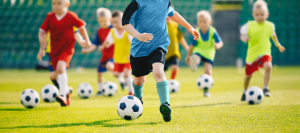
Sports science is the study of scientific principles and methods that can be used to improve athletes’ health and performance. An interdisciplinary field joins components of science, physiology, brain research, biomechanics, and other logical disciplines.
We will have a better understanding of the physiological, psychological, and biochemical factors that influence sports performance if we have knowledge and comprehension of these areas. This was sports science. We should investigate the historical backdrop of sports science.
Sports Science’s Past:
A lot of people think that sports science is a new field that has only recently become popular. Yet, the reality of the situation is that students of history follow the beginnings of sports science back to antiquated Greece.
Galen, a Greek physician, wrote 87 essays on muscle strengthening and health and fitness improvement. Since then, a lot of progress has been made in sports science. Breakthrough brought most of the previous findings up to date, and the new findings helped athletes improve their performance.
You might be curious about the names of these experts who have gone to great lengths to reconcile the previous findings with the most recent ones. They make athletes’ lives better as “sports scientists and experts.”
What exactly do sports scientists do and who are they?
Sports researchers are pros at working with competitors, endlessly mentors to foster preparation programs, examine execution information, and plan sustenance and recuperation methodologies that assist competitors with arriving at their maximum capacity. They use their knowledge of the physical, psychological, and physiological factors that influence athletic performance to create training plans and methods to assist athletes in improving.
Sports scientists are responsible for the following specific tasks:
- Study psychology, exercise physiology, and nutrition to learn more about how they affect athletic performance.
- Develop individual or team-specific training plans in collaboration with athletes and coaches.
- Utilizing a variety of technologies, including GPS tracking system data collection, heart rate monitoring, and other physiological measurements, you can monitor and analyze the performance of athletes.
- To interpret the data and discover patterns and trends related to athletic performance, make use of software for data analysis.
- Based on the findings, provide coaches and athletes with feedback and suggestions.
A sports scientist’s job typically entails applying scientific knowledge and methods to improve athletes’ and teams’ performance. Therefore, let’s look at the careers that sport science students might pursue.
What kinds of jobs are there in sports science?
If you want to use scientific principles to improve sports performance, a career in sports science can be challenging and exciting. Sports science careers include positions with professional sports teams, collegiate athletic programs, and other sporting organizations.
If you want to work in sports science, you should get a bachelor’s or master’s degree. And the International Institute of Sport Management (IISM) is the best place for sports fans to pursue their ambitions of working in the sports industry.
The IISM Bachelor of Sports Science (BSS) program is the ideal blend of classroom instruction and practical experience. You must pass the Sports Science Admission Test (SSAT) to get into BSS. Candidates are evaluated by SSAT on their comprehension of and preference for employment in the sports industry.
Students of BSS gain practical experience at well-known sports science facilities. When it comes to gaining on-site experience in the real world, IISM’s internships and live exposure have proven to be invaluable.
You will be ready for the industry if you learn and participate in hands-on sessions. After that, you’ll oversee designing nutrition and recovery plans, analyzing performance data, creating training programs, and helping to prevent and treat sports-related injuries and conditions.
In general, sports science contributes to the improvement of athletes’ physical and mental health and contributes to the success of sports organizations as well as athletes.

